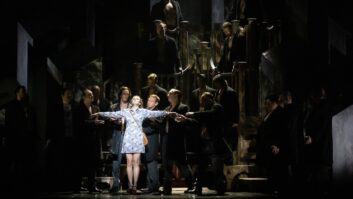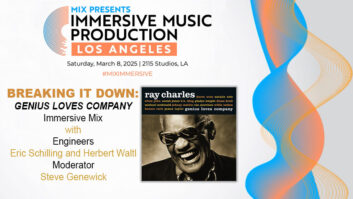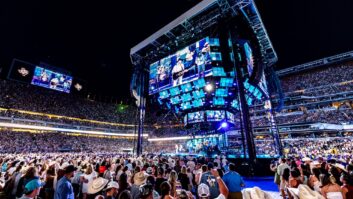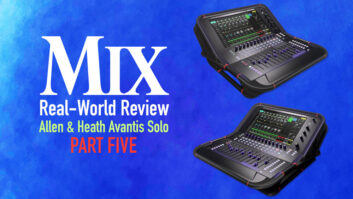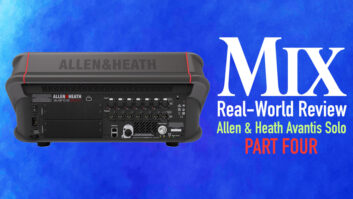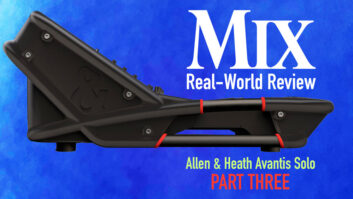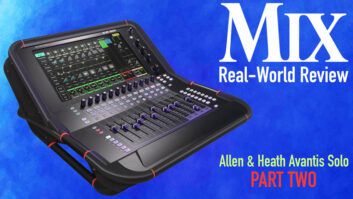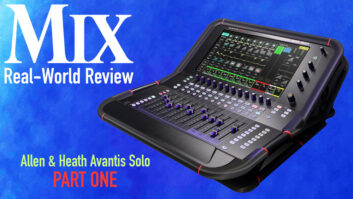There was a time when finding new music was much easier than it is today. All you needed was a handful of great FM stations and a few trusted DJs. Alas, in our current era, there are many more things competing for our attention, and many more artists using any means necessary to break through.
With his new album, Linda Vista, Henry Wolfe proves to us that authenticity and great songwriting is still the best approach. Wolfe’s latest release, produced by Nico Aglietti and Aaron Older, seems to begin where thoughtful songwriters like Harry Nilsson and Randy Newman left off—he employs intelligent and often melancholy chord sequences and combines them with straightforward, sincere lyrics. While recording Linda Vista, Wolfe undertook a similarly authentic approach, recording all the musicians together in a single room using old-school analog equipment.
On Making the Move
It took about two years. I reinvented my style somewhat after I recently moved from New York to Los Angeles. When I was in New York, I was playing in a band that was indie rock, and we were writing straight-ahead synth pop songs with a structure based around a hook and a chorus. When I moved out to Los Angeles, I fell in with a group of players who were much more accomplished than anyone I played with before. They were trained in jazz and weren’t as interested in playing the straight-ahead synth pop that I had been playing before. This was fine for me, because at that point, I was trying to expand my horizons.
Soon I began emulating the style of pre-’60s songwriters. It took me a long time to get comfortable playing this kind of music, and also to develop the chops to be able to perform songs that have a larger vocabulary of chord changes than traditional rock songs. I finally got to a point where I had enough songs and enough confidence in my playing ability that I wanted to go into the studio. I had a band of really talented musicians to work with, but the songs also translated really well solo.
On Letting Analog Rule
I wanted to work with Nico Aglietti and Aaron Older. When I first moved out to L.A. three years ago, I was hanging out with them while they were making this album by Edward Sharpe and the Magnetic Zeros. While making this album, they amassed an incredible collection of gear. They have a studio in a converted garage up in the foothills of Glendale, California, about 1/2 hour from where I was living at the time. It was a beautiful and very rustic place to record: There were coyotes everywhere, along with beautiful views of Los Angeles.
Their setup is completely out of the box, and there is not a computer to be found in their recording studio; it was a very intriguing idea for me to work like that. If you choose to work in this way, you are entrusting your record to people who really know how to make analog gear sound as good as it can sound. If this is done successfully, it is just a different beast than digital. For the music that I was doing, I wanted something that was a little bit warmer and richer, and sometimes I think digital can sound a bit too harsh or hard, if that makes sense. There are some synths and keys on the record, but for the most part, it is about people playing the instruments. There are not programs or loops, and it is a more organic style of music and performance.
On Letting It Bleed
For us, it was about the take—it was a collective thing. You could do it all individually, and in the end it might sound good, but we were trying to capture the life of a live show and have it sound as hi-fi as a studio recording. We recorded most of the basic tracks at once, all together in a room. There was very little separation, and there was bleed all over the place, but that’s what we were going for. We wanted it to sound like people playing together in a room and not like a bunch of overdubs.
The studio had a 24-track Trident board as well as an old Ampex 24-track machine. For each song, we’d do a live track, then a day of overdubs, then mix it from the 2-inch tape down to an Ampex ½-inch machine, then we would move on. The compression we got while mixing down to the ½-inch machine added so much to the sound. When we went into master it, we brought in the reels and mastered right off the ½-inch. That was the only time when it was converted to digital, and even then, we didn’t use much compression at all.
On Sonic References and Themes:
The big thing that Niko and Aaron were listening to at the time, and which I subsequently became obsessed with, was Paul Simon’s album, One Trick Pony. This is Paul Simon playing with the best studio musicians of the time; people like Steve Gadd on drums and Tony Levin on bass. The album is actually the soundtrack to a movie he made in the late ’70s of the same title, and it’s about a band that has been on the road for years and years and whose career has sort of stalled. It is a fantastic singer-songwriter album, but with a very cohesive band playing behind it. Similarly, my album is a solo project, but I wanted it to sound like a band. Randy Newman’s album, Good Old Boys, was also a big influence for me in making this record.
